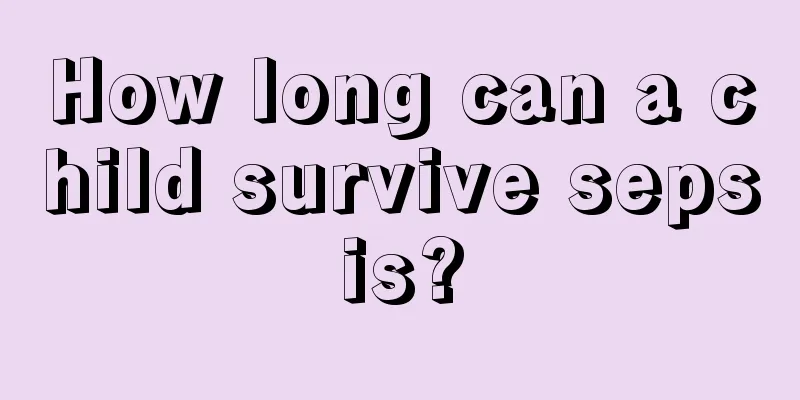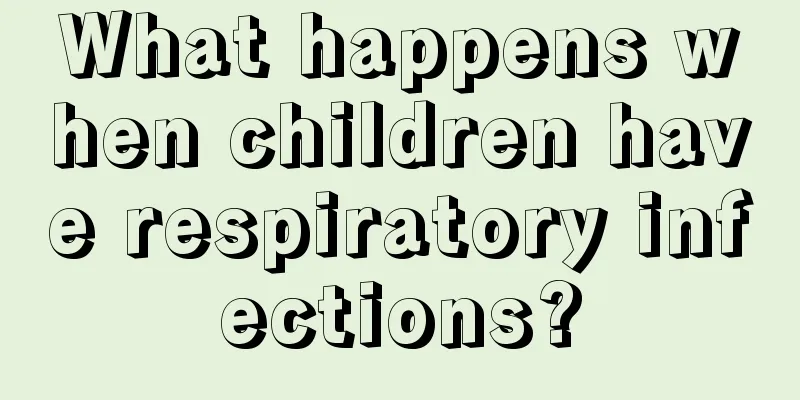How long can a child survive sepsis?

|
The thing people fear most in life is getting sick, because illness will slowly take away people's lives and make their family and friends sad. Children are particularly susceptible to disease because their immune systems are relatively weak. Many children have suffered from childhood sepsis as a result. Sepsis in children is a terrible disease that can endanger children's lives in severe cases. So, how long can children survive with sepsis? Sepsis is not an incurable disease and is not serious enough to require consideration of questions such as “how long can you live?” Sepsis is an infectious disease that refers to an acute systemic infection caused by pathogenic bacteria invading the blood circulation, growing and multiplying in the blood and producing toxins. Whether or not one suffers from sepsis is closely related to the virulence and quantity of the individual's invading bacteria and the body's immune function. Sepsis itself does not have any special clinical manifestations. It may cause recurrent chills or even chills, rash, joint pain, hepatosplenomegaly, etc. In severe cases, there may be changes in mental status, myocarditis, septic shock, disseminated intravascular coagulation, respiratory distress syndrome, etc. Due to different pathogens, the severity of the sepsis symptoms will also vary. Children with sepsis can be cured as long as they can receive timely and regular treatment and no serious complications occur. Treatment (I) Antibiotics should be used as early as possible for antibacterial treatment. When the pathogen is unknown, drugs can be selected based on the route of bacterial invasion, age of the child, clinical manifestations, etc. Broad-spectrum antibiotics are usually used, or combined drugs are used for Gram-positive cocci and Gram-negative bacilli, and then adjustments can be made based on the results of culture and drug sensitivity tests. ① For Staphylococcus aureus infection, it is advisable to use drugs such as oxacillin, cephalosporin, and vancomycin, often combined with two or more drugs for intravenous administration, and continue to use them for 10 days after the body temperature returns to normal; ② For Gram-negative bacteria, such as Escherichia coli and Klebsiella pneumoniae, the third-generation cephalosporin combined with aminoglycosides can be used, and for Pseudomonas aeruginosa infection, ceftriaxone combined with aminoglycosides or carbenicillin can be used; ③For anaerobic bacterial infections, the combination of metronidazole and chloramphenicol is the first choice. If there are purulent lesions, surgical incision and drainage or puncture to drain pus should be performed in addition to systemic antibiotics. (ii) Other treatments: Provide a high-protein, high-calorie, high-vitamin diet to ensure nutrition. Gamma globulin can be given intravenously or small amounts of plasma, whole blood, or albumin can be transfused repeatedly. For patients with severe symptoms of infection and poisoning, short-term (3 to 5 days) treatment with adrenocortical hormones can be given while taking adequate doses of effective antibiotics. |
<<: Three-year-old baby rebellious
>>: Child with low-grade fever and vomiting
Recommend
What is the cause of blue spots on the baby's body?
Nowadays, every child is the treasure of the fami...
What causes knee pain in children?
Knee pain is a problem that troubles many elderly...
Ten-month-old baby often has diarrhea
Every change in the baby after birth is watched b...
Baby has small red spots on both cheeks
If small red spots appear on the baby's cheek...
What are some tips for kids kicking off the blanket?
Children often kick off the quilt when they sleep...
How to Identify Depression in Teens
Depression is a common problem in the human body,...
What should I do if my child has asthma?
Asthma is a very common respiratory disease. Many...
Baby diarrhea convulsions
Diarrhea is a common symptom in babies. It may be...
How to deal with a baby's fever after vaccination
DPT is a very important type of vaccine. It can e...
What to do if a child has blisters caused by burns
If burns are not treated correctly, normal treatm...
Symptoms and care of neonatal eczema
Neonatal eczema is a relatively common disease. I...
Why does a child’s penis become red and swollen?
If a child's penis becomes red and swollen, p...
Why does my two-year-old baby grind his teeth when sleeping at night?
In life, the baby's physical health and healt...
Childhood Gliomas
The incidence of childhood glioma is becoming hig...
What should I do if my baby feels nauseous and spits up?
Spitting up is a common phenomenon in babies and ...









